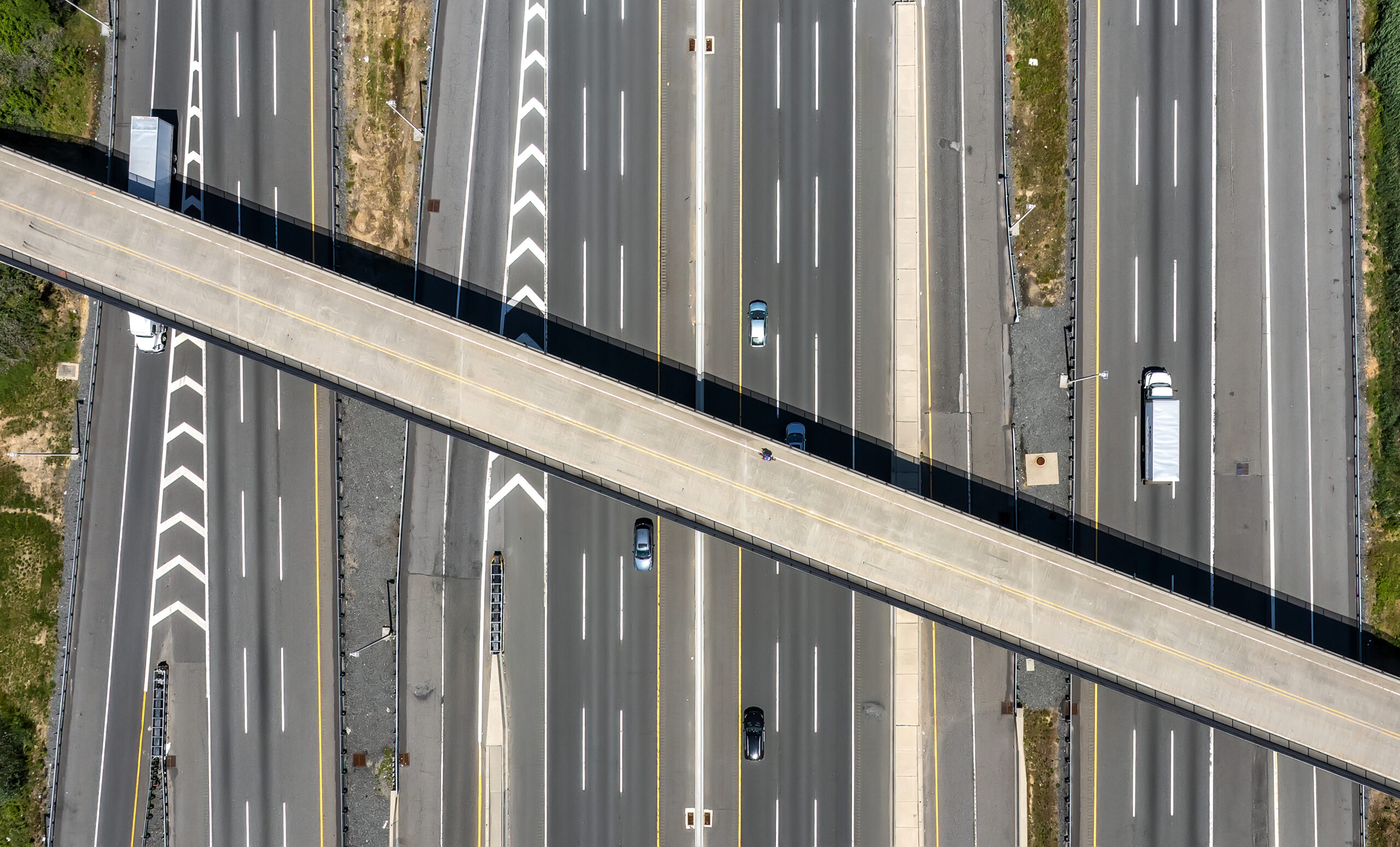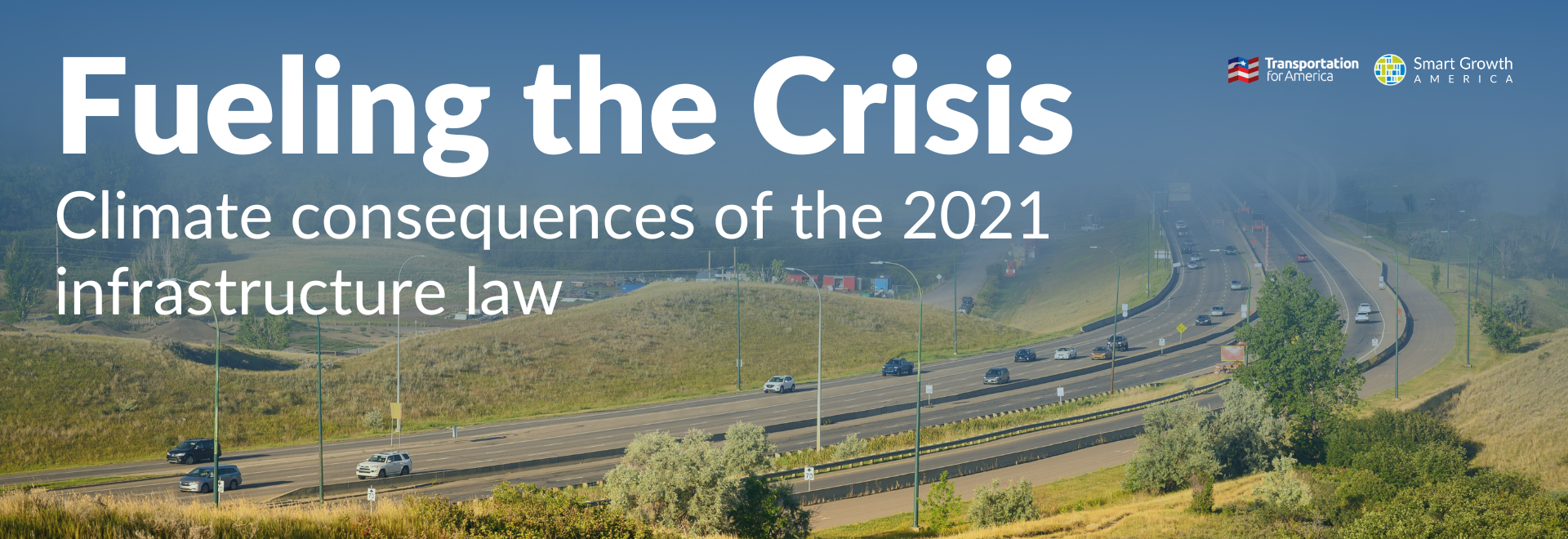Why are we expanding road capacity under emissions-reduction, resilience, and safety programs?
The Congestion Mitigation Air Quality Program, PROTECT Program and the Carbon Reduction Program were touted as prime examples of the infrastructure law’s commitments to climate and emissions mitigation. However, states transferred millions out of CRP and PROTECT formula programs to fund status quo transportation projects. Even among the funds obligated in the name of these programs, we have identified hundreds of millions of dollars in obligations directed toward projects that may end up worsening climate change.
In part thanks to flawed modeling assumptions that improperly account for induced demand and generous project eligibilities written into the IIJA, climate-friendly programs are actually supporting projects that will worsen the impacts of climate change—whether they are directly funding road widening projects or offsetting costs.
Carbon Reduction Program
At passage, the Carbon Reduction Program (CRP) came with flawed, unambitious project eligibilities, many overlapping with the National Highway Performance Program, and with the ability to flex out up to 50% of funding to other programs. Some states, such as Texas, have announced their intent to transfer out CRP funds in their Carbon Reduction Strategy. This analysis finds that CRP funds have been used in ways that offset softer costs for highway expansions, buying “energy efficient lighting” and new intelligent transportation system technology to supplement major widenings for Wisconsin’s I-43 and North Carolina’s I-85. The CRP has also directly funded new expansions for managed lanes, such as for a new expressway in Washington.
Adding new lane miles, even when managed or tolled, induces more driving and transportation emissions. At the very least, including project eligibilities with minimal or even negative impact, while allowing up to 50% of program funds to be drawn out to programs that outright increase emissions is cause for greater scrutiny of the program in the future. Is efficient lighting or new digital road signage (including the message signs that state DOTs put jokes on) the best use of limited funds to reduce emissions when active transportation and transit infrastructure are far more transformative investments? More efficient road designs, LED lighting, travel demand management, and intelligent transportation systems are already eligible projects under other existing programs. The very purpose of the Carbon Reduction Program is undermined when it offsets costs for programs that increase emissions, like the NHPP.
But the CRP is a young program, and only 20% of states’ available Fiscal Year 2022 through Fiscal Year 2024 funding apportionments have been spent down. States like Maryland are making plans to spend the funds wisely, taking their time to execute projects with maximum impact and benefits to communities, not just plugging them into the status quo program. But as we wait for the CRP’s emissions reducing projects, we often see the same old in the meantime: more lanes, more emissions.
FHWA hosts states’ Carbon Reduction Strategies online.

PROTECT
The Promoting Resilient Operations for Transformative, Efficient, and Cost-Saving Transportation Program, or more commonly, PROTECT, is a formula and competitive grant program meant to ensure infrastructure’s resilience in the face of a shifting climate. However, when PROTECT funds are allocated toward projects that expand capacity, those projects meant to stave off the effects of climate change could be contributing to growing transportation emissions. When up to 40% of funding is eligible to go toward new road capacity expansion, this should come as no surprise.
The Hampton Roads Bridge Tunnel Expansion project, the largest highway construction project in the state of Virginia’s history, has received over $23.7 million in PROTECT formula grant funding. In Florida, $2.3 million in PROTECT grant funds are being directed toward a project that doubles the number of lanes and reconstructs interchanges to expand capacity connecting to I-95. Only 26% of FY22-24 PROTECT formula program apportionments have been obligated so far, meaning the program’s distribution of project types may change. However, these trends are not encouraging.
CMAQ
The Congestion Mitigation and Air Quality Program (CMAQ) has been a part of the federal transportation program since 1991, with the express purpose of reducing traffic congestion and improving air quality, particularly in areas where air quality does not meet national standards. Similar to the CRP, there is a wide array of eligible projects to reduce emissions, including transit improvements, programs that incentivize people to drive less, and bicycle and pedestrian infrastructure. CMAQ even saw new eligibilities introduced to the program, including funding for bikeshares and installation of medium- and heavy- duty electric vehicle chargers.
However, CMAQ also funds projects aimed at reducing vehicular congestion through traffic flow improvements. That means that funds that could be spent on expanding sidewalks and bus service are used to widen roads and add new free-flowing lanes to feed interstates, with the logic that reduced idling reduces emissions.
While it is true that reducing congestion and time spent with an idle engine may reduce emissions on a trip-by-trip basis, If people end up taking more trips overall, this benefit is negated. That’s why it’s essential to understand that the built environment shapes how people choose to get around. The models often used by highway planners do not fully factor the long term effects of making driving the only comfortable or time-efficient option, making walking or transit impractical even for nearby destinations.
Air quality improving, emissions reducing projects are slow to have funding designated to them. Like the CRP and PROTECT, CMAQ has had only a relatively small portion of its total funds spent down so far, just 28% of FY22-24 apportionments as of June 4, 2024, which means that the program may change greatly as time goes on and more projects are completed and reimbursed.
Highway Safety Improvement Program
The federal Highway Safety Improvement Program (HSIP) has existed, in some form, since 1966. However, despite decades of investment, road fatalities, especially for those walking and biking, remain high and in excess of our peers.
Our analysis finds that many projects funded by HSIP include elements (such as new turn lanes, auxiliary lanes, shoulder, intersection, and lane widening) that result in increased road capacity. Because general transportation practice values speed over safety, HSIP frequently delivers projects that add more space for cars to flow freely, unimpeded, rather than create a safe environment for all road users. While a new turn lane in an intersection widening project might reduce the amount of rear end collisions and improve traffic flow, pedestrian crossing lengths increase and those crossing are left more exposed to traffic when they cross the street. Further, widened lanes provide more ample opportunities for drivers to speed. As being outside a vehicle becomes less practical and perceptibly dangerous, people drive more, perpetuating dangerous conditions.
Car-centered HSIP projects may reduce injuries for drivers but they can only do so up to a point. Ending fatalities and serious injuries for all road users requires rethinking the role of vehicular speed in design and how people get around. Making inherently safer modes, like walking and biking, more practical and convenient is one of the most impactful safety investments a jurisdiction can make.
A significant investment in increased emissions
A majority of the funds contributing to increased emissions come from formula programs.






